- Home
- Laurie R. King
The Mary Russell Companion Page 4
The Mary Russell Companion Read online
Page 4
Mycroft spends his days in his Whitehall office, and his evenings in the Diogenes Club (where silence is enforced) across from his rooms on Pall Mall. Sherlock is coy about his brother’s precise job, saying at first that Mycroft “audits the books in some of the government departments”, although later (The Bruce-Partington Plans) he admits that it goes far beyond that:
Occasionally he is the British government….the most indispensable man in the country.
The conclusions of every department are passed to him, and he is the central exchange, the clearinghouse, which makes out the balance. All other men are specialists, but his specialism is omniscience….Again and again his word has decided the national policy.
The Mycroft of the Russell memoirs is drawn in considerably greater detail regarding his home, his housekeeper, his assistant, and his long-time relationship with a woman who appears in that early Conan Doyle story. He suffers a heart attack at the end of 1923, after which he undertakes a regime of exercise and diet. Russell has been fond of her brother-in-law, but events during the autumn of 1924 bring to her attention the darker side of his Intelligence activities, and the dire consequences of putting great power in one man’s hands.
Characters first seen in the Russell Memoirs
Inspector John Lestrade is the son of G. Lestrade, the Scotland Yard inspector of the Conan Doyle stories—a policeman described as “a little sallow rat-faced, dark-eyed fellow” whose talents prove almost as unprepossessing as his appearance. Holmes describes the elder Lestrade as “the best of a bad lot” although shockingly conventional in his approach to solving crimes. Not, however, conventional enough to spurn the assistance of the world’s only consulting detective, one Sherlock Holmes.
The son, John, has clearly learned from his father, and for the most part is willing to align himself with that most unconventional of detectives. Still, there are times when he is forced to put his foot down—but only rarely is he driven to issue actual warrants for the arrest of Holmes and Russell.
Ali & Mahmoud Hazr
Mahmoud and Ali Hazr are Bedouin brothers who wander the Palestine countryside as public scribes; at the same time, they are employed by Mycroft Holmes as spies for the Crown, reporting to London the information they pick up and the rumors they hear in the desert places. When Russell and Holmes arrive by night, the brothers are given the responsibility of watching over them—a task they greet with scorn until Russell wins their affection by nearly murdering Ali. However, the Hazr “brothers” are also cousins Maurice (Marsh) Hughenfort, the Duke of Beauville, and his cousin Alistair, who have another, very different life in England.
Damian Adler is the son of Sherlock Holmes and Irene Adler. Irene Adler appears in the Conan Doyle story “A Scandal in Bohemia”, an operatic contralto and “well-known adventuress” who so soundly defeats Holmes that ever after, he admiringly refers to her as “The Woman”. According to the Memoirs (as in the W. S. Baring-Gould biography, Sherlock Holmes of Baker Street—although Baring-Gould goes on to posit that their son was Nero Wolfe!) the detective and the singer have a liaison during Holmes’ “great hiatus”, the years he spends outside of England following his apparent death in the Reichenbach Falls incident of 1891. (Details of the death are in “The Final Problem”, and of the hiatus in “The Empty House”.) Father and son first meet in 1919, when young Captain Adler is charged with murder in France. When the charges are dropped, Adler leaves Europe for Shanghai, where his artistic impulse flowers, compelled by the Holmes family’s “art in the blood” (In “The Greek Interpreter”, Holmes says that his grandmother was the sister of “the artist Vernet”, although which such Vernet is not specified).
By the time Adler comes to England in the Twenties with his Chinese wife, Yolanda, and “preternaturally clever” young daughter, Estelle, he is a successful Surrealist painter. The Adlers appear in two of the Memoirs.
Veronica Beaconsfield (“Ronnie”) is one of the few friends mentioned in the Memoirs. The two meet on Russell’s first day at university, when she takes one look at the shy new undergraduate and drags her into Oxford’s wartime amateur dramatics (Russell being satisfyingly tall and therefore ideal for male roles, despite her long hair). Some years later, Ronnie shows her friend a possible alternative to life in the shadow of Sherlock Holmes, when she introduces Russell to Margery Childe.
Patrick Mason is the manager on Mary Russell’s Sussex farm, a middle-aged man who had a deep affection for Russell’s mother, Judith—and thus for the daughter. He is often bemused by Russell’s antics, but is ever willing to lend a hand.
Characters known to the outside world
Dashiell Hammett
Dashiell Hammett was employed by the Pinkerton Detective Agency (whose motto is, “We Never Sleep”) despite battling tuberculosis his entire life. In 1924, he was in San Francisco (a very damp city, for this man with lung problems) and beginning his writing career, trying to support a wife and child by selling short stories to the early “pulp” magazine, Black Mask.
The Reverend Sabine Baring-Gould
The Reverend Sabine Baring-Gould (The Moor) was a “squarson”—squire/parson—whose estate bordered Dartmoor. He was indeed “a true and unexpected British eccentric: an academic romancer, a gullible skeptic, a man both cold and passionate” (as it says in King’s afterward to The Moor). Baring-Gould lived in what he proclaimed to be an “Elizabethan manor house”, despite having designed and built the better part of it himself, in the hamlet of Lewtrenchard. There he collected (and often blithely rewrote) folk-songs, ministered to his parishioners, and produced a steady stream of books—bodice-ripper novels; lives of the saints as thoroughly invented as his house; a natural history of were-wolves; and guides to his beloved moorland—in order to support his large family and the parish at large. He lived in Lewtrenchard when Arthur Conan Doyle toured Dartmoor, although there is no indication that the two met. Nor is it commonly realized that Baring-Gould was godfather to Sherlock Holmes, although his grandson, W. S. Baring-Gould, later borrowed heavily from details in Sabine’s autobiography as he composed his own imaginative biography, this one of Sherlock Holmes.
A myriad of other important historical individuals appear throughout the Memoirs, particularly as Russell and Holmes extend their scope past the shores of the United Kingdom. Edmund Allenby, Herbert Samuel, T. E. Lawrence and others show up in O Jerusalem, as do Hubert Lyautey and the brothers Abd el Krim in Garment of Shadows. Fernando Pessoa (Pirate King) is, amazingly enough, not a fictional character.
Other characters prove slightly more enigmatic: Kimball O’Hara himself, for example, is certainly a historical personage, although whether or not he ever walked in a corporate body is a matter for debate. So, too, with Lord Peter Wimsey, whose existence may be well testified to in the work of Dorothy L. Sayers, but about whom Debrett’s Peerage & Baronetage is oddly silent.
The Memoirs: a note
Each of the twelve main volumes (and the half-volume of Beekeeping for Beginners) have their own page on the Laurie R. King website, with lengthy excerpts, links to videos, discussion questions, recommended reading, and various pertinent remarks. Here, shorter excerpts are given, and Laurie’s remarks focus on some key element of each book, making no attempt at synopsis or overall evaluation. Miss Russell firmly believes that each reader must make his or her own evaluation.
The titles are organized according to their publication date, not necessarily the date of the events they describe.
One
The Beekeeper’s Apprentice;
With Some Notes Upon the Segregation of the Queen
(One of the Independent Mystery Booksellers Association’s 100 Best Novels of the Century)
Russellisms
I was fifteen when I first met Sherlock Holmes, fifteen years old with my nose in a book as I walked the Sussex Downs, and nearly stepped on him.
**
“When faced with the unthinkable,” I said shakily, “one chooses the merely impossible.”
**
I held up a pair of scarlet satin sandals with four-inch heels and tried to imagine Holmes in them.
All the world’s stage: places Russell goes in this Memoir
Britain: Sussex, London, Bristol, Cardiff, Wales, Oxford
Palestine (Israel): Jerusalem, Jaffa, Haifa, Jericho, Sea of Galilee, Plains of Esdraelon, Acre
(See the Maps chapter for details.)
Laurie’s Remarks
The Beekeeper’s Apprentice was the first of the Russell memoirs to see light of day, in 1994. As explained earlier (see below chapter, The Mystery of the Memoirs) it and all subsequent volumes are classified as novels, “written by” Laurie R. King, a conundrum acknowledged in the preface to the Memoir.
When we first see the two central protagonists, Sherlock Holmes is not at all sure about this young person who first steps on him, then insults him, and goes on to tell him rather more about himself than he chose to acknowledge. (Holmes’ rather different version of their meeting is found in the short story, “Beekeeping for Beginners.”)
Nonetheless, he decides to harness this young and voracious mind to the discipline of his trade, teaching her all he knows and watching with bemusement—and some alarm—as she grows beyond the status of student into a full-fledged partner.
Certain themes enter the Russell memoirs with this first introduction. Beekeeping, certainly, that being what Conan Doyle has declared to be Holmes’ primary interest in his Sussex retirement. This book plays on a mixed analogy of “queen” images: Russell’s initial scorn for the bees that permit themselves to be enslaved; Holmes’ fascination with how the social realities of the hive-box illuminate the swarms of the city (particularly the criminal swarms) in which he spent so much of his life. Then, in the game of chess she and Holmes play against an unseen enemy, Russell the pawn is transformed into a queen. And drawing on the vocabulary of beekeeping once again, Holmes must segregate his young apprentice-turned-partner in order to solve this dangerous case.
Because The Beekeeper’s Apprentice lays the ground for what comes after, a detailed Annotation of the opening chapters is included here.
The Annotated Beekeeper’s Apprentice
(Notes by Leslie S. Klinger and Laurie R. King)
One
Two Shabby Figures
The discovery of a sign of true intellect outside ourselves procures us something of the emotion Robinson Crusoe felt when he saw the imprint of a human foot on the sandy beach of his island.[1]
Mary Russell, nose in a book (Tamra Arnold)
I was fifteen[2] when I first met Sherlock Holmes, fifteen years old with my nose in a book as I walked the Sussex Downs,[3] and nearly stepped on him. In my defence I must say it was an engrossing book, and it was very rare to come across another person in that particular part of the world in that war year of 1915.[4] In my seven weeks of peripatetic reading amongst the sheep (which tended to move out of my way) and the gorse bushes[5] (to which I had painfully developed an instinctive awareness) I had never before stepped on a person.
Gorse bush
It was a cool, sunny day in early April, and the book was by Virgil.[6] I had set out at dawn from the silent farmhouse, chosen a different direction from my usual—in this case southeasterly, towards the sea—and had spent the intervening hours wrestling with Latin verbs, climbing unconsciously over stone walls, and unthinkingly circling hedge rows, and would probably not have noticed the sea until I stepped off one of the chalk cliffs[7] into it.
The chalk cliffs, far above the sea.
As it was, my first awareness that there was another soul in the universe was when a male throat cleared itself loudly not four feet from me. The Latin text flew into the air, followed closely by an Anglo-Saxon oath.[8] Heart pounding, I hastily pulled together what dignity I could and glared down through my spectacles at this figure hunched up at my feet: a gaunt, greying man in his fifties[9] wearing a cloth cap, ancient tweed greatcoat, and decent shoes, with a threadbare Army rucksack on the ground beside him. A tramp perhaps, who had left the rest of his possessions stashed beneath a bush. Or an Eccentric. Certainly no shepherd.
He said nothing. Very sarcastically. I snatched up my book and brushed it off.
“What on earth are you doing?” I demanded. “Lying in wait for someone?”
He raised one eyebrow at that, smiled in a singularly condescending and irritating manner, and opened his mouth to speak in that precise drawl which is the trademark of the overly educated upper-class English gentleman.[10] A high voice; a biting one: definitely an Eccentric.
“I should think that I can hardly be accused of ‘lying’ anywhere,” he said, “as I am seated openly on an uncluttered hillside, minding my own business. When, that is, I am not having to fend off those who propose to crush me underfoot.” He rolled the penultimate r to put me in my place.
The uncluttered hillside of Sussex
Had he said almost anything else, or even said the same words in another manner, I should merely have made a brusque apology and a purposeful exit, and my life would have been a very different thing. However, he had, all unknowing, hit squarely on a highly sensitive spot. My reason for leaving the house at first light had been to avoid my aunt, and the reason (the most recent of many reasons) for wishing to avoid my aunt was the violent row we’d had the night before, a row sparked by the undeniable fact that my feet had outgrown their shoes, for the second time since my arrival three months before. My aunt was small, neat, shrewish, sharp-tongued, quick-witted, and proud of her petite hands and feet. She invariably made me feel clumsy, uncouth, and unreasonably touchy about my height and the corresponding size of my feet. Worse, in the ensuing argument over finances, she had won.
His innocent words and his far-from-innocent manner hit my smouldering temper like a splash of petrol. My shoulders went back, my chin up, as I stiffened for combat. I had no idea where I was, or who this man was, whether I was standing on his land or he on mine, if he was a dangerous lunatic or an escaped convict or the lord of the manor, and I did not care. I was furious.
“You have not answered my question, sir,” I bit off.
He ignored my fury. Worse than that, he seemed unaware of it. He looked merely bored, as if he wished I might go away.[11]
“What am I doing here, do you mean?”
“Exactly.”
“I am watching bees,” he said flatly, and turned back to his contemplation of the hillside.
Nothing in the man’s manner showed a madness to correspond with his words. Nonetheless I kept a wary eye on him as I thrust my book into my coat pocket and dropped to the ground—a safe distance away from him—and studied the movement in the flowers before me.
There were indeed bees, industriously working at stuffing pollen into those leg sacs of theirs, moving from flower to flower. I watched, and was just thinking that there was nothing particularly noteworthy about these bees when my eyes were caught by the arrival of a peculiarly marked specimen. It seemed an ordinary honeybee but had a small red spot on its back. How odd—perhaps what he had been watching? I glanced at the Eccentric, who was now staring intently off into space, and then looked more closely at the bees, interested in spite of myself. I quickly concluded that the spot was no natural phenomenon, but rather paint, for there was another bee, its spot slightly lopsided, and another, and then another odd thing: a bee with a blue spot as well. As I watched, two red spots flew off in a north westerly direction. I carefully observed the blue-and-red spot as it filled its pouches and saw it take off towards the northeast.
I thought for a minute, got up, and walked to the top of the hill, scattering ewes and lambs, and when I looked down at a village and river I knew instantly where I was.[12] My house was less than two miles from here. I shook my head ruefully at my inattention, thought for a moment longer about this man and his red- and blue-spotted bees, and walked back down to take my leave of him. He did not look up, so I spoke to the back of his head.
“I’d say the blue spots
are a better bet, if you’re trying for another hive,” I told him. “The ones you’ve only marked with red are probably from Mr. Warner’s orchard. The blue spots are farther away, but they’re almost sure to be wild ones.” I dug the book from my pocket, and when I looked up to wish him a good day he was looking back at me, and the expression on his face took all words from my lips—no mean accomplishment. He was, as the writers say but people seldom actually are, open-mouthed. He looked a bit like a fish, in fact, gaping at me as if I were growing another head. He slowly stood up, his mouth shutting as he rose, but still staring.
“What did you say?”
“I beg your pardon, are you hard of hearing?” I raised my voice somewhat and spoke slowly. “I said, if you want a new hive you’ll have to follow the blue spots, because the reds are sure to be Tom Warner’s.[13]”
“I am not hard of hearing, although I am short of credulity. How do you come to know of my interests?”[14]
“I should have thought it obvious,” I said impatiently, though even at that age I was aware that such things were not obvious to the majority of people. “I see paint on your pocket-handkerchief, and traces on your fingers where you wiped it away. The only reason to mark bees that I can think of is to enable one to follow them to their hive. You are either interested in gathering honey or in the bees themselves, and it is not the time of year to harvest honey. Three months ago[15] we had an unusual cold spell that killed many hives. Therefore I assume that you are tracking these in order to replenish your own stock.”

 O Jerusalem
O Jerusalem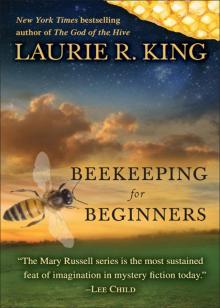 Beekeeping for Beginners
Beekeeping for Beginners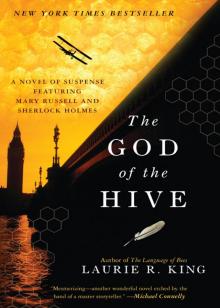 The God of the Hive
The God of the Hive The Language of Bees
The Language of Bees Night Work
Night Work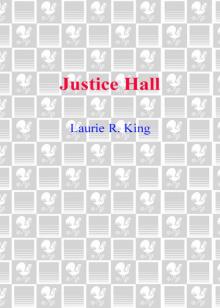 Justice Hall
Justice Hall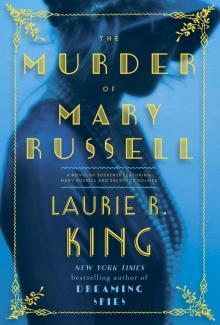 The Murder of Mary Russell
The Murder of Mary Russell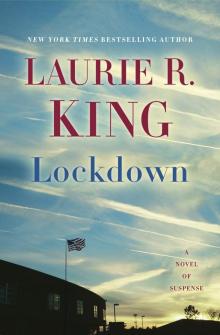 Lockdown
Lockdown To Play the Fool
To Play the Fool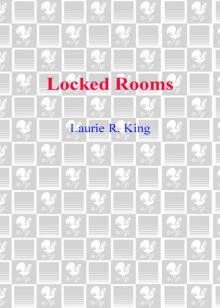 Locked Rooms
Locked Rooms Island of the Mad
Island of the Mad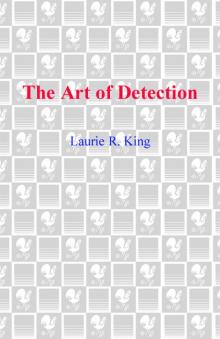 The Art of Detection
The Art of Detection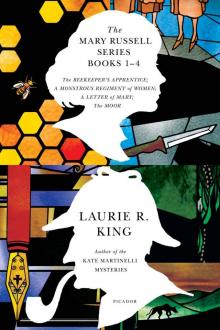 The Mary Russell Series Books 1-4
The Mary Russell Series Books 1-4 The Beekeeper's Apprentice
The Beekeeper's Apprentice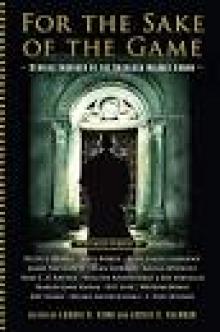 For the Sake of the Game
For the Sake of the Game A Darker Place
A Darker Place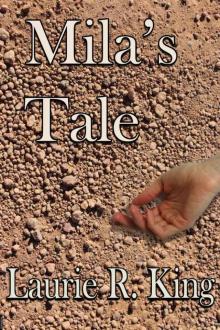 Mila's Tale
Mila's Tale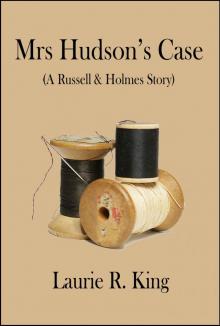 Mrs Hudson's Case
Mrs Hudson's Case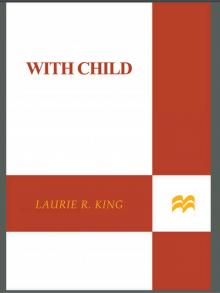 With Child
With Child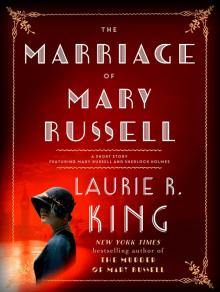 The Marriage of Mary Russell
The Marriage of Mary Russell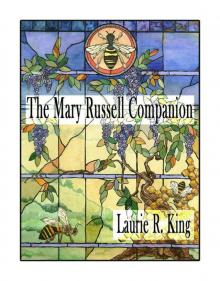 The Mary Russell Companion
The Mary Russell Companion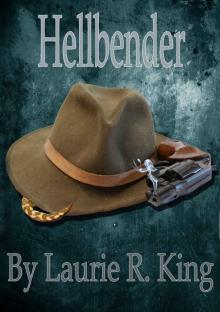 Hellbender
Hellbender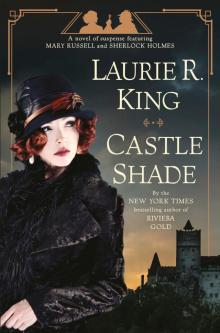 Castle Shade
Castle Shade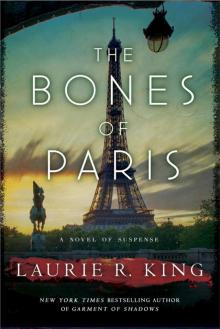 The Bones of Paris
The Bones of Paris Riviera Gold
Riviera Gold A Grave Talent
A Grave Talent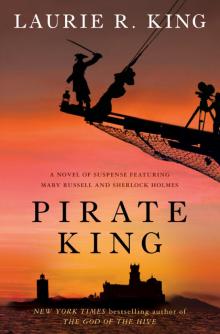 Pirate King
Pirate King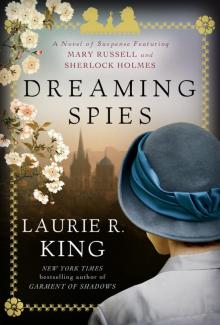 Dreaming Spies
Dreaming Spies Folly
Folly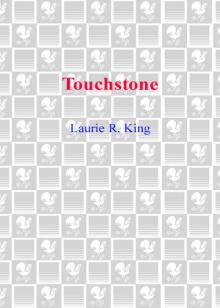 Touchstone
Touchstone The Game
The Game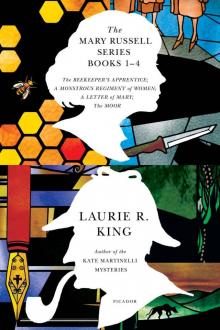 The Mary Russell Series Books 1-4: The Beekeeper's Apprentice; A Monstrous Regiment of Women; A Letter of Mary; The Moor
The Mary Russell Series Books 1-4: The Beekeeper's Apprentice; A Monstrous Regiment of Women; A Letter of Mary; The Moor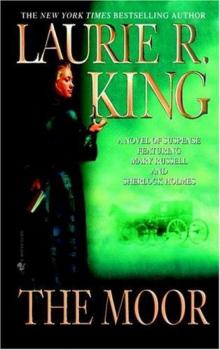 The Moor mr-4
The Moor mr-4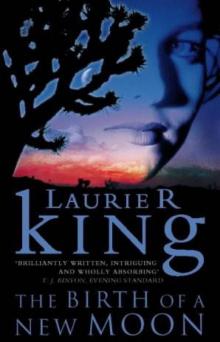 The Birth of a new moon
The Birth of a new moon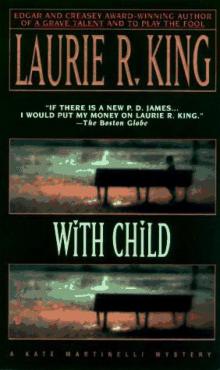 With Child km-3
With Child km-3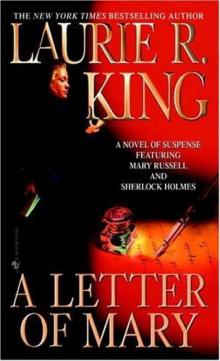 A Letter of Mary mr-3
A Letter of Mary mr-3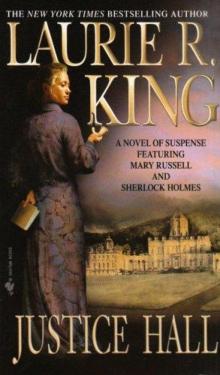 Justice Hall mr-6
Justice Hall mr-6 Pirate King: A novel of suspense featuring Mary Russell and Sherlock Holmes
Pirate King: A novel of suspense featuring Mary Russell and Sherlock Holmes Pirate King: A novel of suspense featuring Mary Russell and Sherlock Holmes mr-11
Pirate King: A novel of suspense featuring Mary Russell and Sherlock Holmes mr-11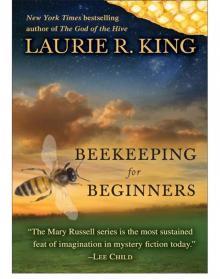 Beekeeping for Beginners (Short Story)
Beekeeping for Beginners (Short Story)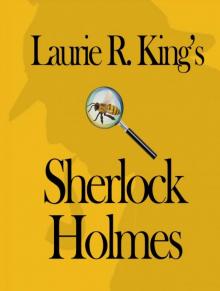 Laurie R. King's Sherlock Holmes
Laurie R. King's Sherlock Holmes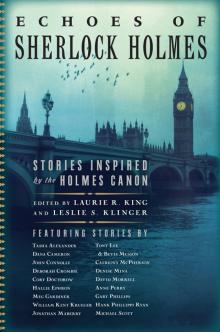 Echoes of Sherlock Holmes
Echoes of Sherlock Holmes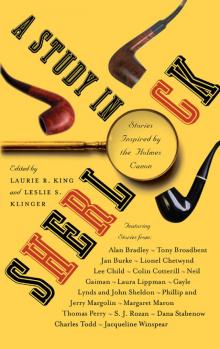 A Study in Sherlock
A Study in Sherlock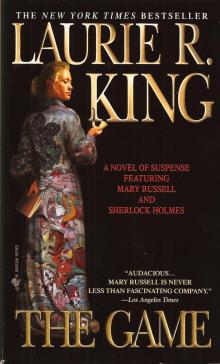 The Game mr-7
The Game mr-7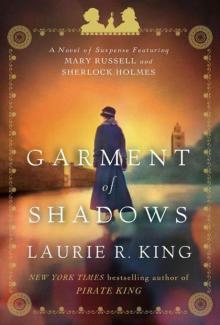 Garment of Shadows: A Novel of Suspense Featuring Mary Russell and Sherlock Holmes
Garment of Shadows: A Novel of Suspense Featuring Mary Russell and Sherlock Holmes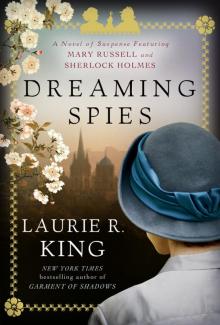 Dreaming Spies: A novel of suspense featuring Mary Russell and Sherlock Holmes
Dreaming Spies: A novel of suspense featuring Mary Russell and Sherlock Holmes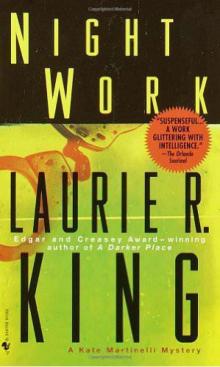 Night Work km-4
Night Work km-4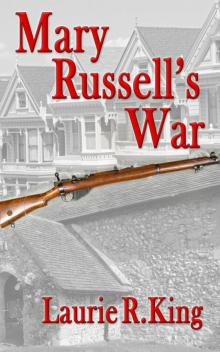 Mary Russell's War
Mary Russell's War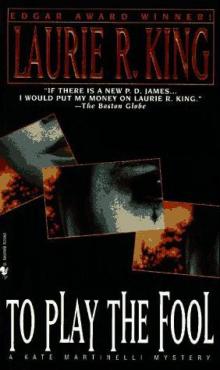 To Play the Fool km-2
To Play the Fool km-2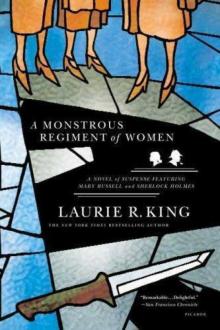 A Monstrous Regiment of Women mr-2
A Monstrous Regiment of Women mr-2 O Jerusalem mr-5
O Jerusalem mr-5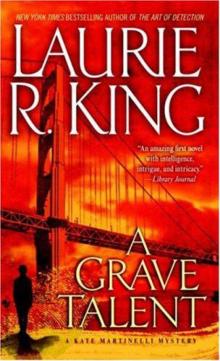 A Grave Talent km-1
A Grave Talent km-1